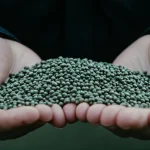Defining the Ideal Texture of Sticky Toffee Pudding
When discussing sticky toffee pudding texture, the goal is to achieve a moist and tender crumb that distinguishes it from other desserts. The ideal dessert texture strikes a fine balance between density and lightness. It should be dense enough to feel substantial and rich but not so heavy that it becomes stodgy or overwhelming. This balance ensures that each bite melts in the mouth, offering a satisfying yet delicate experience.
Traditional pudding characteristics emphasize that the cake must avoid sogginess, which often results from excessive syrup or underbaking. At the same time, it needs to steer clear of dryness—a common pitfall that makes the pudding feel crumbly or crumbly and unappealing. Achieving this texture requires attentive baking, allowing the pudding to maintain moisture without becoming overly saturated.
Topic to read : What are the best tips for making homemade crumpets?
In summary, the ideal dessert texture for sticky toffee pudding combines a moist, tender crumb with a pleasant density, free from sogginess or dryness, delivering an authentic and enjoyable treat every time.
Essential Ingredients for Perfect Texture
Choosing the right sticky toffee pudding ingredients is crucial for achieving that moist, tender crumb. The star is undoubtedly the dates: selecting soft, plump dates rich in natural sugars enhances both sweetness and moisture. Preparing them properly—usually by soaking or pureeing—ensures they integrate smoothly into the batter, creating a uniform texture.
In parallel : How do you create a perfectly balanced fish and chips?
The choice of sugar also affects the final pudding feel. Baking with brown sugar adds a deep molasses flavor and promotes a moist, chewy texture due to its higher moisture content compared to white sugar. The balance of fats, often butter, contributes richness, while leaveners like baking soda or baking powder gently aerate the mixture for lightness without drying it out.
Maintaining correct ingredient ratios is key. Too much flour or insufficient fat can cause dryness, while overdoing dates or sugar risks heaviness. Substitutions, such as alternative sugars or fats, can be made carefully but may alter flavor or texture. Understanding these roles helps bakers create a well-balanced pudding that’s perfectly sticky and tender.
Mixing Methods for Moist, Fluffy Pudding
Mastering mixing techniques is crucial for creating a moist, fluffy sticky toffee pudding. Begin by creaming the butter and sugar until light and airy; this aeration is the foundation of the pudding’s texture. Next, introduce eggs gradually, incorporating them smoothly to avoid curdling, which can negatively affect consistency.
When combining dry ingredients with wet, alternate adding flour with liquids to maintain an even batter consistency. This precaution prevents over-mixing, which can develop gluten and lead to a dense result. The batter should be thick but smooth—thick enough to hold its shape yet fluid to allow rising during baking.
Dates, essential to sticky toffee pudding, must be chopped finely and folded carefully into the batter. Folding, rather than stirring vigorously, ensures the dates are evenly integrated without breaking down, preserving bursts of flavor and texture. Using these precise methods ensures your pudding will be deliciously moist and delightfully fluffy.
Baking Techniques and Timing
Mastering sticky toffee pudding baking requires attention to oven temperatures and timing precision. Typically, an oven set between 325°F and 350°F (160°C to 175°C) ensures even cooking, allowing the pudding to develop its characteristic moist texture without drying out. Choosing the right bakeware—preferably a shallow, heat-conductive metal or ceramic dish—promotes uniform heat distribution, vital for consistent results.
Recognizing doneness signs is crucial to avoid disappointment. Visual cues such as a golden-brown top and slight caramelization near the edges signal readiness. For a tactile test, gently press the pudding’s center; it should spring back lightly without feeling overly firm or liquid. Using a skewer can also help—if it comes out with a few moist crumbs, the pudding is perfectly baked.
To achieve the correct bake time, start checking at the minimum recommended time, usually around 30 minutes, adjusting based on oven variance and altitude. Overbaking leads to dryness, while underbaking results in a gooey center failing the sticky toffee pudding baking hallmark. Monitoring closely with these practical tips safeguards the ideal balance.
Expert Tips to Avoid Common Texture Mistakes
Mastering the texture of sticky toffee pudding can be challenging, but expert baking advice reveals key strategies for success. If you’re fixing dense pudding, first consider ingredient measurements: too much flour or not enough leavening can cause heaviness. Precise weighing helps avoid these pitfalls.
Altitude and humidity significantly affect texture. At higher elevations, baking times and temperatures should be adjusted to prevent a dry or crumbly pudding. In humid climates, reduce liquid slightly to maintain the ideal moistness. These adjustments come from thorough sticky toffee pudding troubleshooting.
Enhancing texture doesn’t stop at baking. Serving with warm sauce adds moisture and balances density, creating a delightful mouthfeel. A well-chosen sauce can transform a slightly dense pudding into a luxurious dessert. Recognising these common texture pitfalls and applying expert baking advice ensures your sticky toffee pudding is consistently successful and delicious, no matter the conditions.




